INTRODUCTION
MATERIALS AND METHODS
1. Data sources and search strategy
2. Study selection
3. Data extraction and assessment of the risk of bias
4. Statistical analyses
RESULTS
1. Study characteristics
Table 1
| Study |
Intervention control |
No. of patients | Level | Local anesthetics | Confirmation of blocking effect | Type of surgery |
|---|---|---|---|---|---|---|
| Ciftci et al. 2020 [13] | ESPB | 30 | L3 | 20 mL 0.25% bupivacaine each side | No | Single-level lumbar discectomy and hemilaminectomy surgery |
| No intervention | 30 | None | None | None | ||
| Eskin et al. 2020 [14] | ESPB | 40 | T12-L5 single segment | 20 mL 0.25% bupivacaine each side | No | Lumbar decompression surgery for one or two vertebral levels |
| No intervention | 40 | None | None | None | ||
| Liu et al. 2019 [21] | ESPB | 20 | Surgery segments | 20 mL 0.4% ropivacaine each side | No | Posterior vertebral surgery |
| No intervention | 20 | None | None | None | ||
| Singh et al. 2020 [15] | ESPB | 20 | T10 | 20 mL 0.5% bupivacaine each side | Yes | Prolapsed lumbar intervertebral disk, lumbar stenosis, laminectomy |
| No intervention | 20 | None | None | None | ||
| Wang et al. 2018 [22] | ESPB | 30 | Surgery segments | 15 mL 0.5% ropivacaine each side | No | Posterior lumbar vertebral surgery |
| No intervention | 30 | None | None | None | ||
| Wu et al. 2019 [23] | ESPB | 20 | L4 | 20 mL 0.4% ropivacaine each side | Yes | Posterior lumbar interbody fusion |
| No intervention | 20 | None | None | None | ||
| Yayik et al. 2019 [16] | ESPB | 30 | L4 | 20 mL 0.25% bupivacaine each side | Yes | Open lumbar decompression |
| No intervention | 30 | None | None | None | ||
| Yeşiltaş et al. 2021 [17] | ESPB | 28 | Surgery segments | 20 mL (1:1) mixture solution of 0.25% bupivacaine and 1.0% lidocaine | No | Posterior spinal instrumentation and fusion for spondylolisthesis |
| Saline with no block | 28 | Surgery segments | 20 mL saline | None | ||
| Yu and Guo 2018 [24] | ESPB | 30 | Surgery segments | 20 mL 0.375% ropivacaine each side | No | Lumbar spine surgery |
| No intervention | 30 | None | None | None | ||
| Yu et al. 2021 [18] | ESPB | 40 | Surgery segments | 30 mL 0.25% bupivacaine each side | No | Internal fixation for lumbar spinal fractures |
| Saline with no block | 40 | Surgery segments | 30 mL saline each side | None | ||
| Zhang et al. 2021 [19] | ESPB | 30 | L3 | 20 mL 0.4% ropivacaine each side | No | Lumbar spinal fusion surgery |
| Sham blocks | 30 | L3 | Subcutaneous infiltration (1 mL 1% lidocaine) each side | None | ||
| Zhang et al. 2020 [20] | ESPB | 30 | T12 | 25 mL 0.3% ropivacaine each side | Yes | Open posterior lumbar decompression surgery |
| No block | 30 | None | None | None |
2. Primary outcomes
3. Secondary outcomes
Table 2
| Outcome | Studies (n) | RR or mean difference (95% CI) | P value for statistical significance | I2 |
P value for heterogeneity |
GRADE |
|---|---|---|---|---|---|---|
| Cumulative intraoperative intravenous morphine equivalent consumption (mg) | 7 [13, 17, 19-22, 24] | –9.63 (–15.4 to –3.86) | 0.001 | 93% | < 0.00001 | Moderate |
| Time to first rescue analgesic (hr) | 5 [14-17, 20] | 6.15 (2.19 to 10.12) | 0.002 | 100% | < 0.00001 | High |
| Number of patients requiring rescue analgesia | 7 [13-17, 19, 23] | 0.39 (0.19 to 0.80) | 0.01 | 90% | < 0.00001 | High |
| Urinary retention | 2 [22, 24] | 0.50 (0.10 to 2.60) | 0.41 | 0% | 1.00 | Low |
| PONV | 9 [13, 14, 16-19, 22-24] | 0.54 (0.36 to 0.83) | 0.005 | 40% | 0.10 | High |
| Itching | 5 [13, 14, 18, 22, 24] | 0.58 (0.25 to 1.35) | 0.21 | 31% | 0.22 | Moderate |
| Length of hospital stay (day) | 5 [17-20, 22] | –1.04 (–2.23 to 0.15) | 0.09 | 99% | < 0.00001 | Low |
| Frist time of ambulation (day) | 3 [19, 20, 22] | –0.93 (–1.97 to 0.07) | 0.07 | 98% | < 0.00001 | Low |




 PDF
PDF Citation
Citation Print
Print



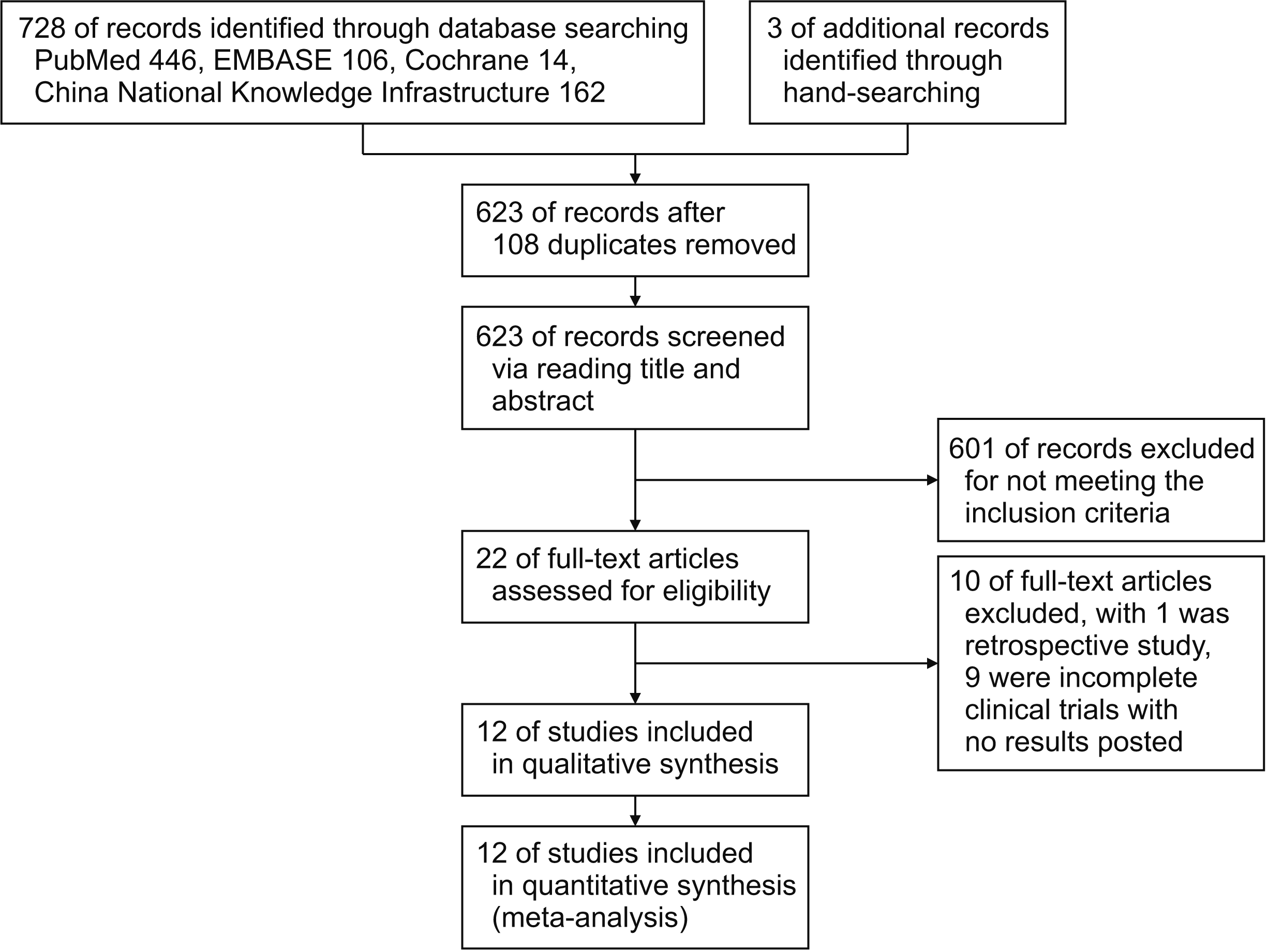
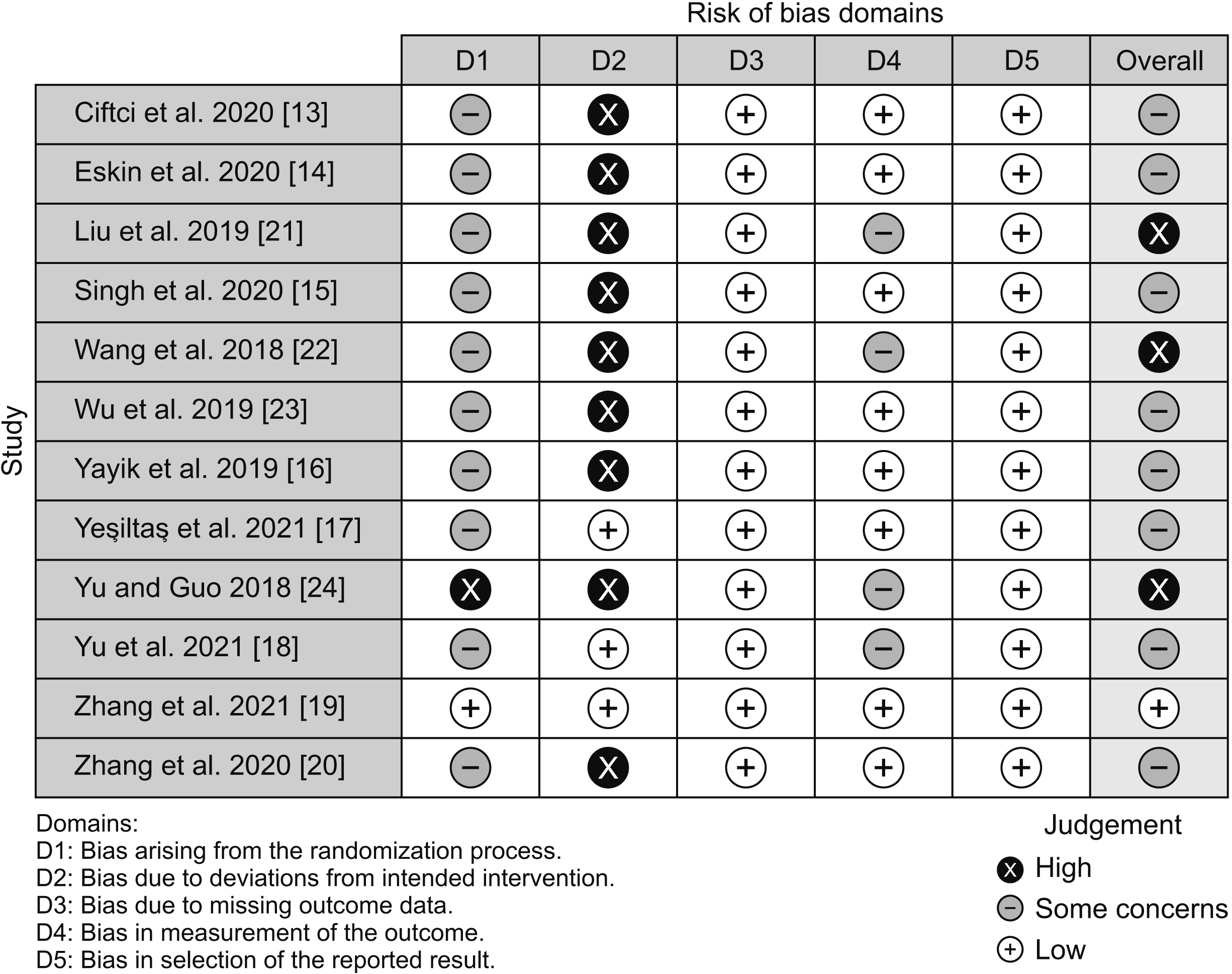
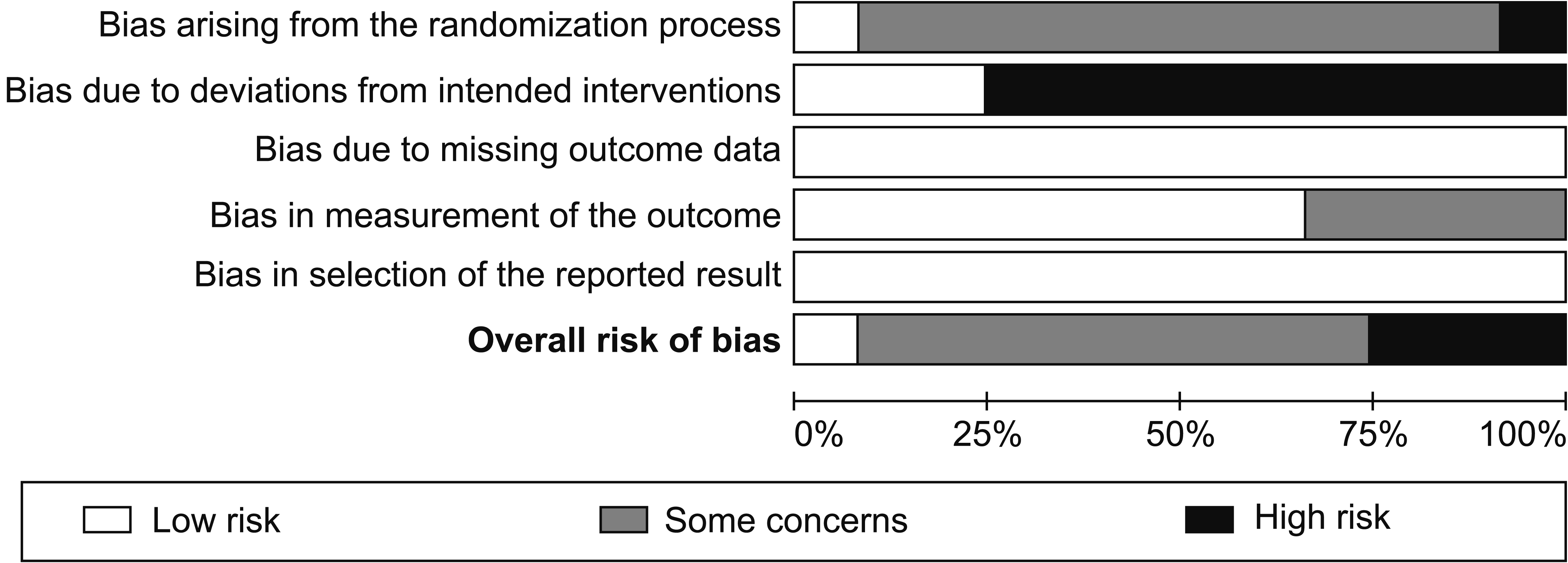
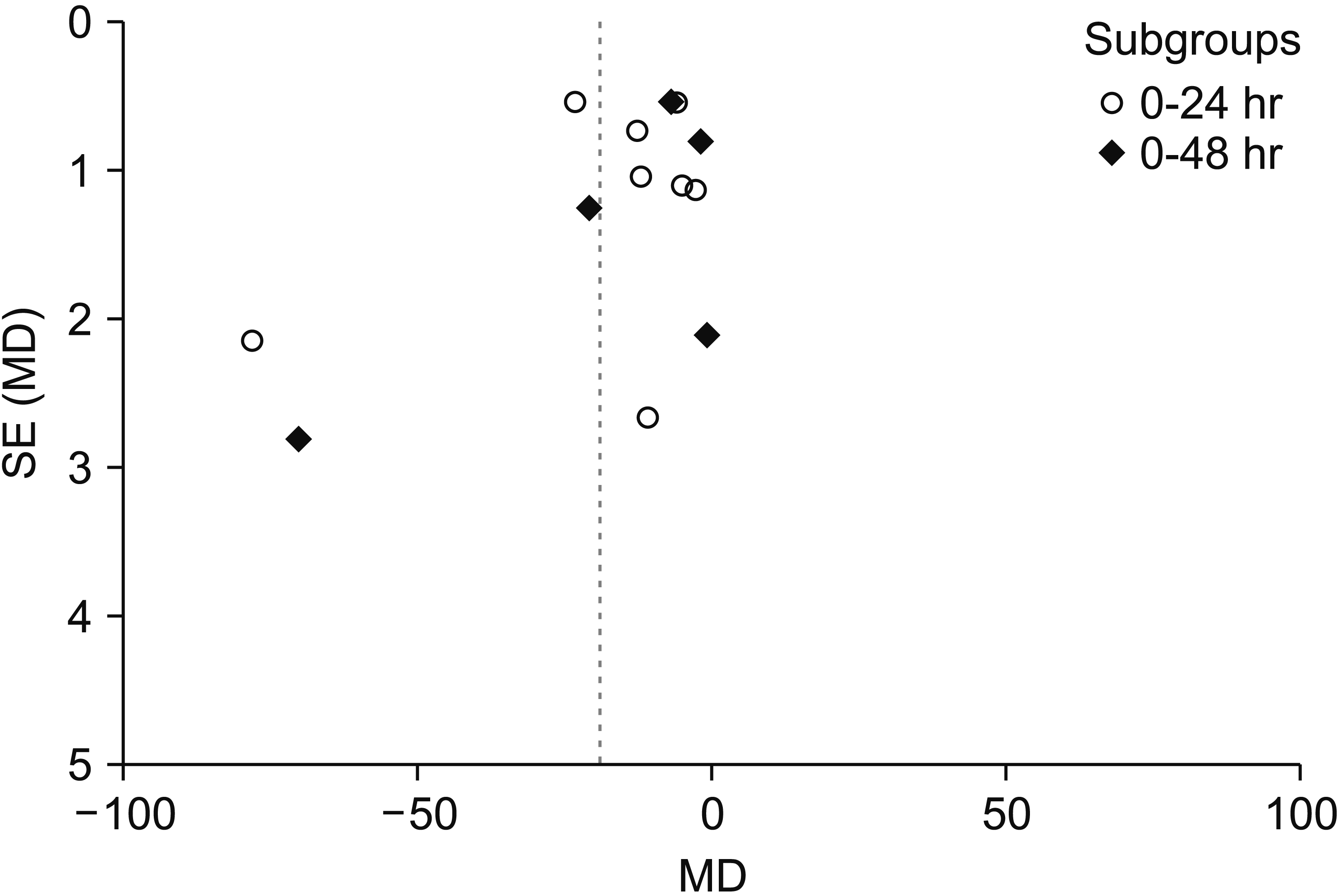
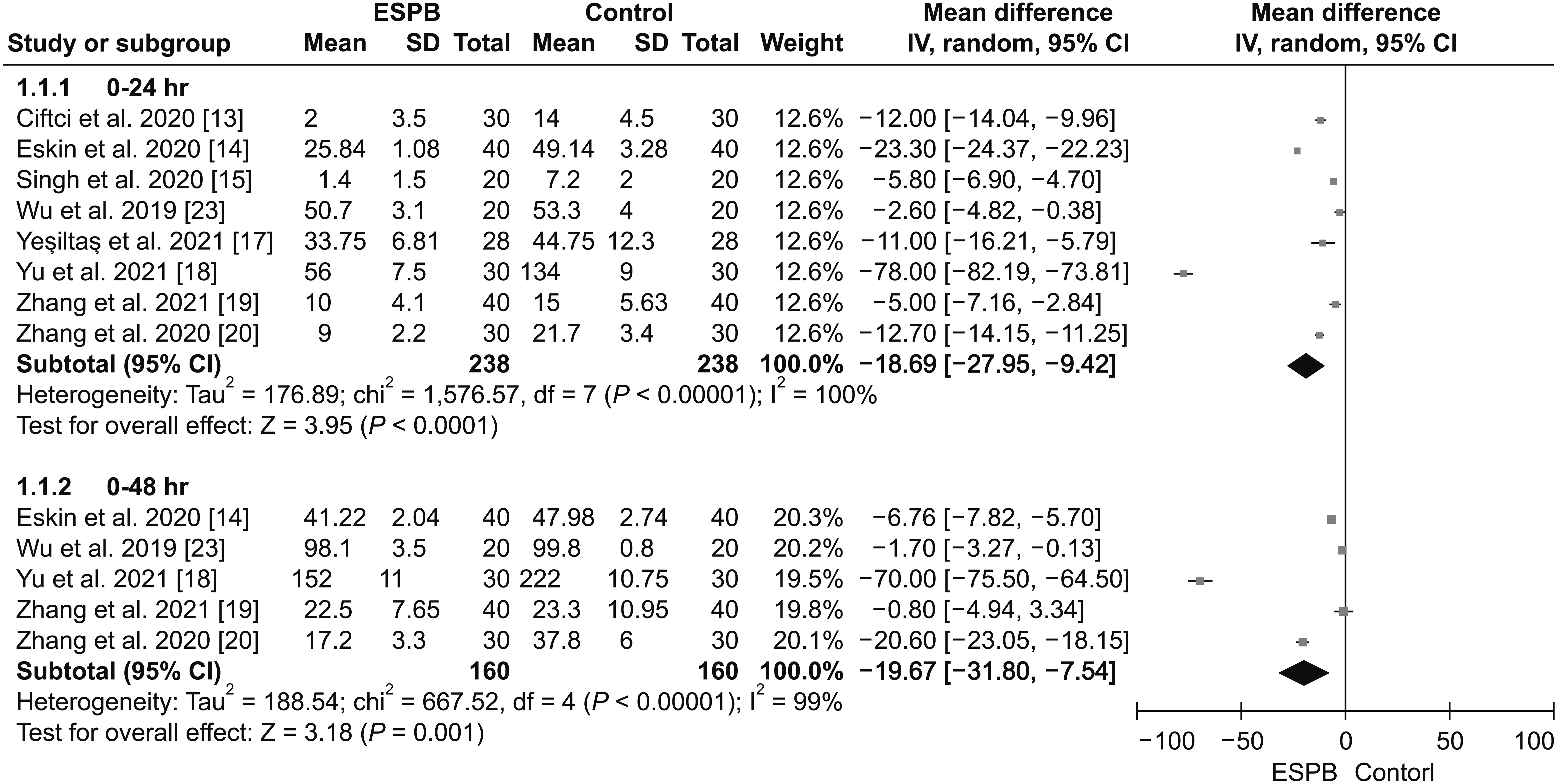
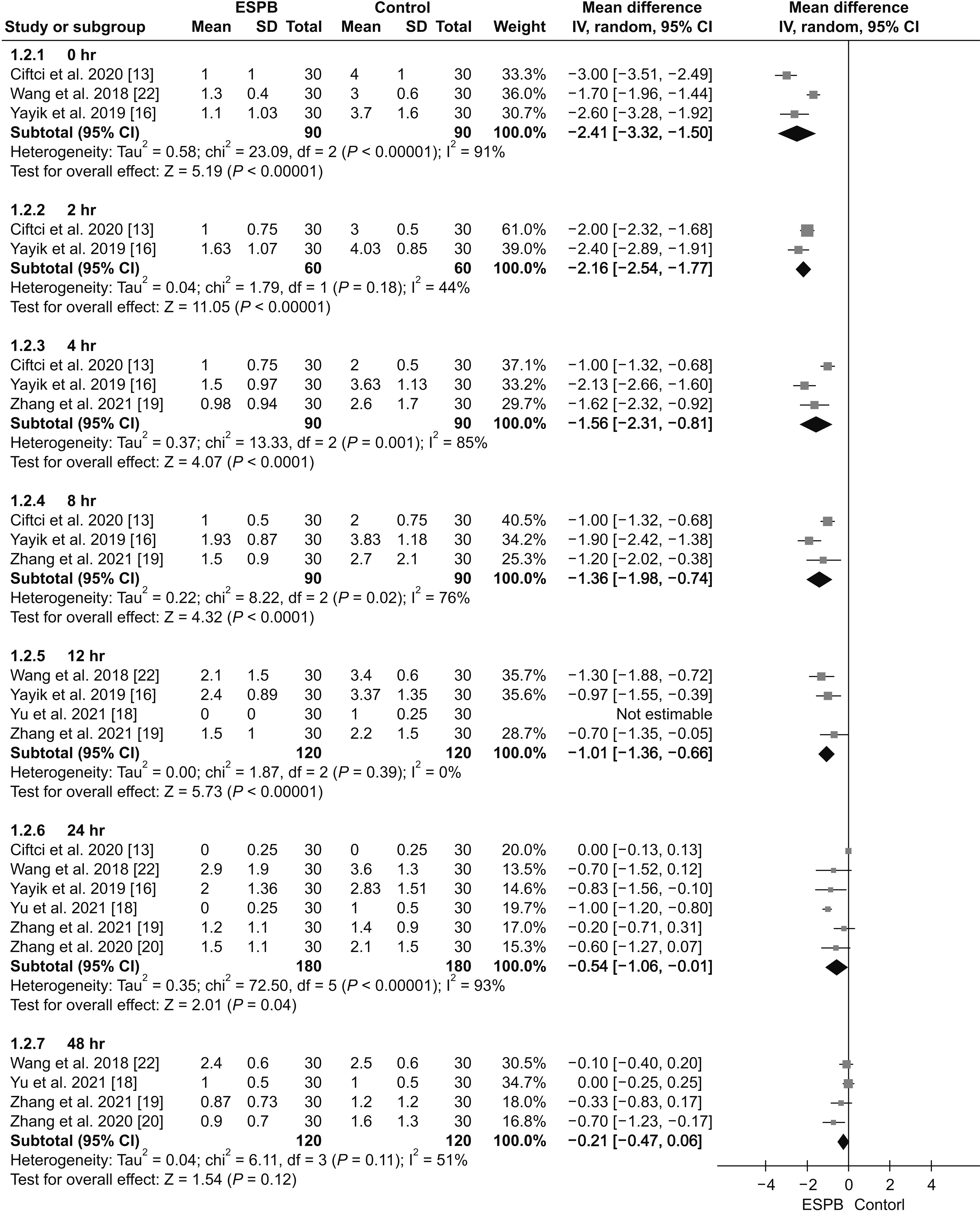
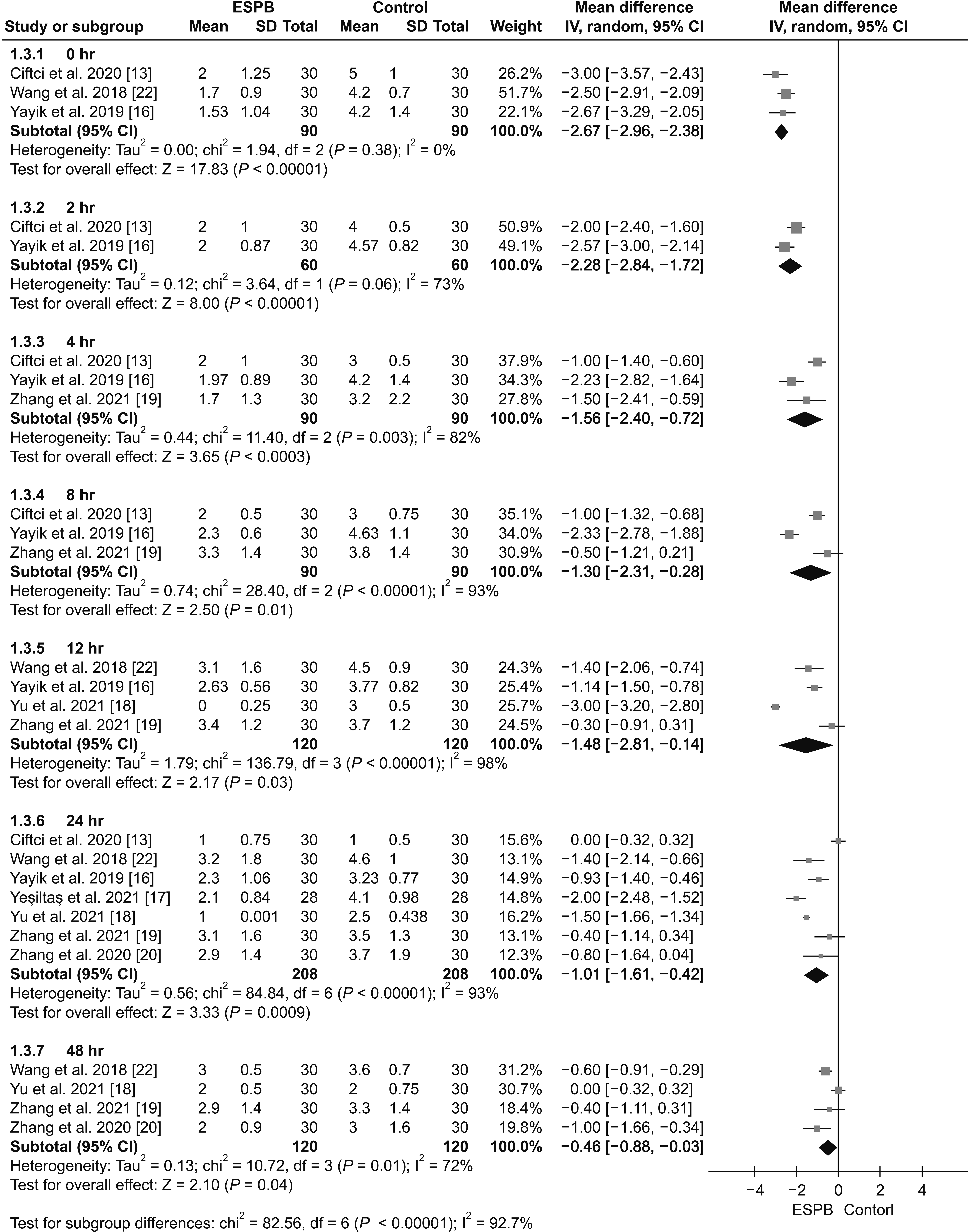
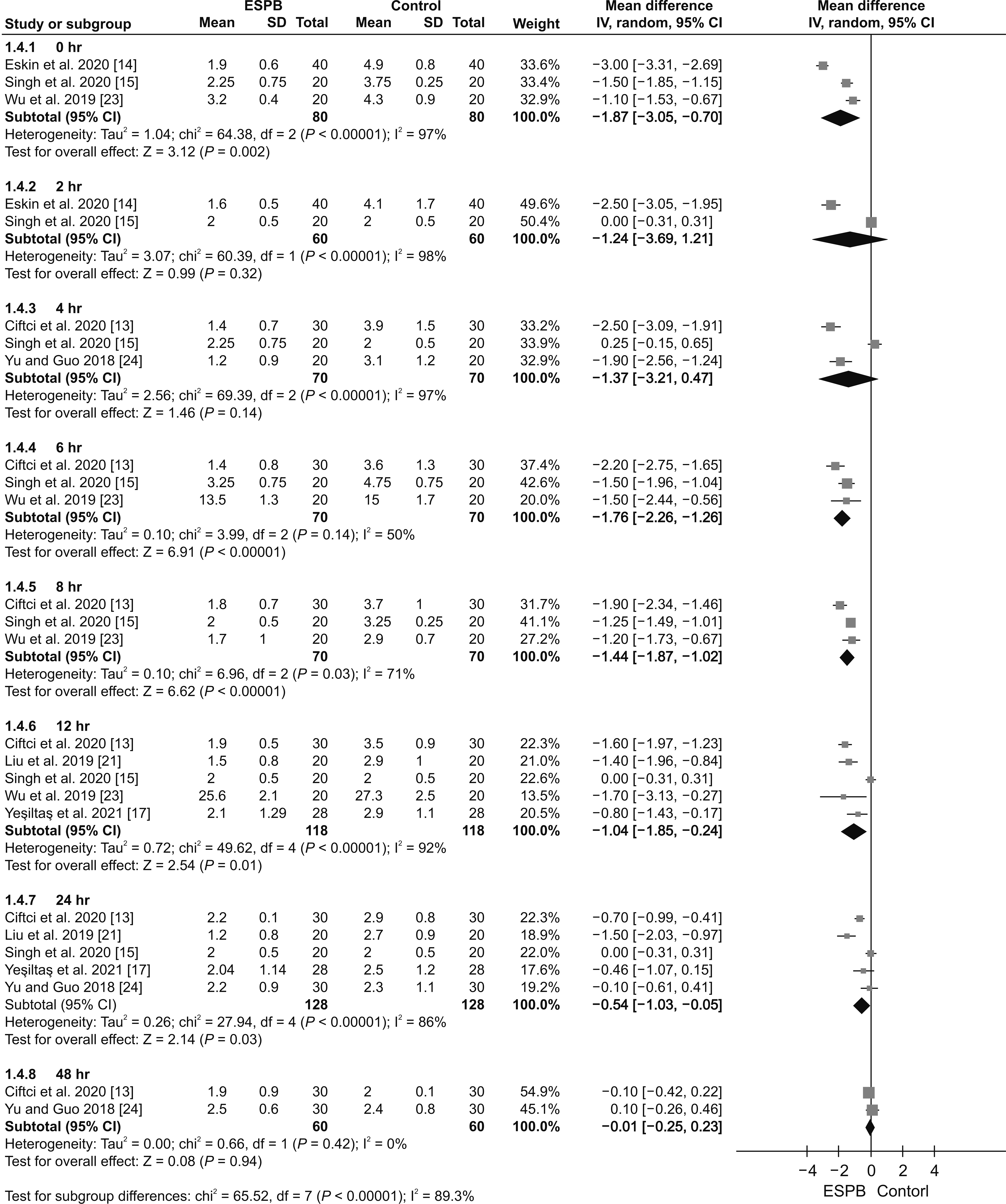
 XML Download
XML Download